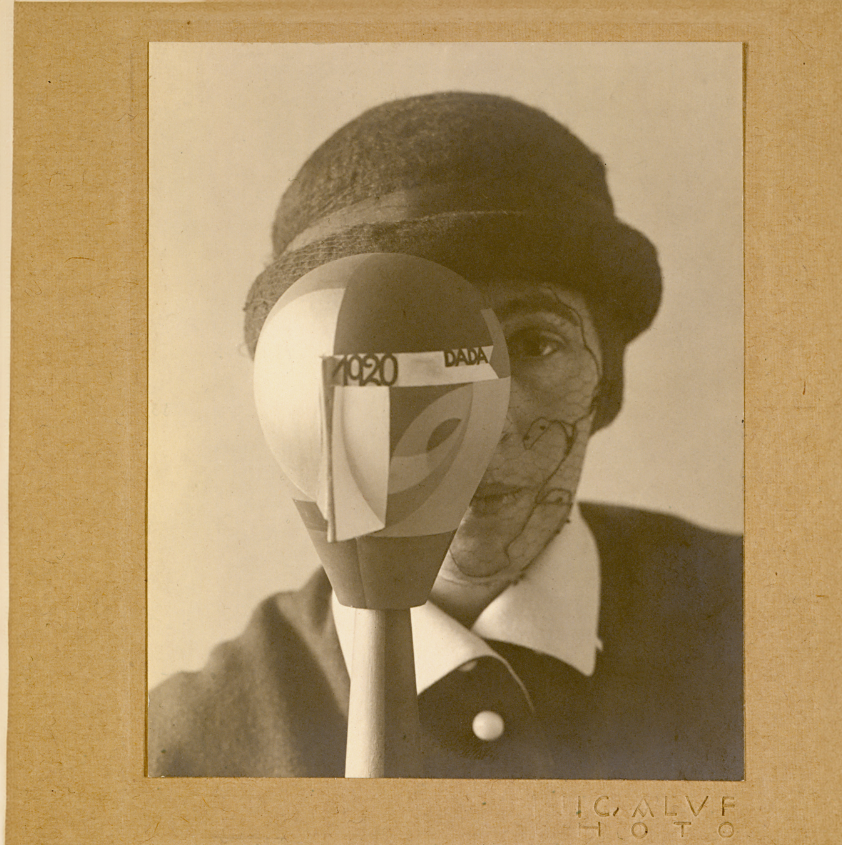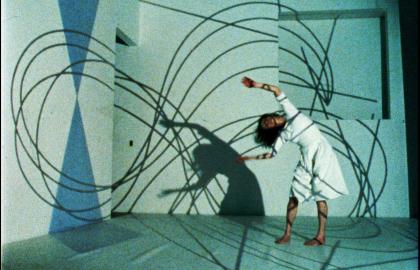“The exhibition that was held at the Galerie Tanner in Zurich, in November 1915, was to be the greatest event of my life. It was where I met Sophie Taeuber for the first time.”
1. They were friends, lovers, and creative partners
Arp and Taeuber-Arp first met in Zurich in 1915 at one of Arp’s exhibitions. A few years later, they become a couple. Both discovered their love for art at a young age. Their love for each other and that for art came together in a number of works they created not with two, but with four hands. Taeuber-Arp met her tragic and unexpected end in 1943. Heartbroken by her death, Arp retreated to a monastery.
2. Arp wrote poetry for Taeuber-Arp after her death
Eventually, after Taeuber-Arp’s death, Arp did start creating again. He wrote beautiful poems for his late wife, some of which you can read in the literary section of the exhibition’s visitor guide. Here’s a sneak preview.
« Sophie rêvait Sophie Peignait Sophie dansait » :
Tu rêvais d’étoiles ailées,
de fleurs qui cajolent les fleurs
sur les lèvres de l’infini,
de sources de lumière qui s’épanouissent,
d’éclosions symétriques,
de soies respirantes,
de sciences sereines,
loin des maisons aux mille dards,
aux prosternations de déserts naïfs,
parmi mille miracles débraillés.
Tu rêvais de ce qui repose dans l’immuable de la clarté.
Tu peignais une rose dévoilée ;
un bouquet d’ondes,
un cristal vivant.

3. They were central figures within Dadaism
Along with Hugo Ball, Tristan Tzara, and Richard Huelsenbeck, Arp is one of the figureheads of Dadaism, an avant-garde art movement of the early 20th century that rejects traditional aesthetic norms and focuses on chaos, absurdism, and anti-art.
The movement had a legendary start on 5 February 1916 at the Cabaret Voltaire in Zurich. Taeuber-Arp performed various modern expressive dances at the opening of the Galerie Dada in 1917. She also creates a series of portrait-like wooden sculptures called ‘Dada heads’.
4. Taeuber-Arp’s puppets are a true (re)discovery
Some are mischievous and funny, while others are poignant or terrifying: Taeuber-Arp’s puppets are made for movement and action. Yet, after their creation in 1918, they only came to life a few times and lingered in the Museum für Gestaltung’s collection in Zurich for almost a hundred years. Artist Marina Rumjanzewa beautifully portrayed them in her short film Marionettes in Motion in 2021. High time to (re)discover them!
“These puppets fascinated the Dadaists as well as the Surrealists.” — Tristan Tzara
5. Arp unfairly overshadowed Taeuber-Arp
To have their own legacy suffer was an all too familiar fate of many women artists who married well-known male artists. And that was unfortunately the case for Taeuber-Arp too, although Arp did everything possible to keep her oeuvre alive. Her textile works, puppets, and tapestries, along with her paintings and drawings, have finally been picked up by major international exhibitions in recent years.
You can discover the oeuvres of both artists, their first major exhibition together in Belgium, in Bozar starting on 20 September.












